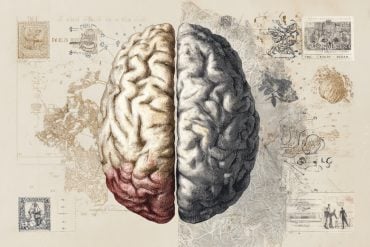Summary: Our attitudes toward others may be attributed to nonverbal signals as much as the behavior of other people.
Source: Northwestern University
If you were to meet two new people, and others seem to be more friendly toward one of those individuals, would that lead you to like that individual more than the other?
A new Northwestern University study examined whether people can acquire attitudes toward other individuals from the nonverbal signals that are directed toward them.
“This is important because often we are not explicitly thinking about the nonverbal signals that people display,” said Allison Skinner, formerly a postdoctoral researcher at Northwestern University, and now an assistant professor at the University of Georgia. “So we could be picking up messages from the nonverbal signals in our environment that we are not even aware of.”
The researchers found that after people watched a brief silent video of individuals interacting, they acquired attitudes toward the individuals in the video based on the nonverbal signals that were displayed toward them. This was true of the attitudes that people were explicitly aware of, but this also impacted their implicit attitudes.
“This means that people were quicker to pair the individual who received positive nonverbal signals with good things, than the individual who received negative nonverbal signals,” said Skinner, lead author of the study. “This was especially interesting because most of our participants did not think that the nonverbal signals that were displayed toward the individuals in the videos influenced their attitudes. Only about 30% of people indicated that how the individuals were treated influenced their attitudes toward them.”
Skinner said the fact that people often attributed their attitudes to the behavior of the recipients of nonverbal signals was eye opening.
“Even though we edited the videos so that the targets of nonverbal signals all responded in the same way — whether they received positive or negative nonverbal signals, and only the nonverbal signals that they received varied, a substantial proportion of participants attributed their attitudes to the targets’ behavior,” Skinner said.

“This has important implications for how people make sense of the nonverbal messages that they are exposed to in everyday life. These findings suggest that when we see people being less friendly toward one individual relative to another, we often attribute the unfriendliness to the target. Believing that we like them less because they do not seem to be very friendly, when in fact, it is others who were not very friendly to them.”
Skinner said it is possible that this research also may lay the foundation for group-based biases.
“These studies build upon prior work showing that attitudes toward racial groups can be influenced by nonverbal signals,” Skinner said. “For example, white people in the U.S. who observe white people displaying negative nonverbal signals toward black people tend to go on to show more anti-black bias than those who were exposed to a positive nonverbal signals directed toward a black person.”
Co-author Sylvia Perry said their findings suggests that, even in contexts in which people’s attitudes toward others are relatively neutral to begin with, the nonverbal signals that they observe can create new attitudes toward unfamiliar others.
“I think this has important implications for our understanding of how we develop biases toward social groups, in general — even from a young age,” said Perry, assistant professor of psychology in the Weinberg College of Arts and Sciences at Northwestern and a faculty associate with the University’s Institute for Policy Research.
Source:
Northwestern University
Media Contacts:
Hilary Hurd Anyaso – Northwestern University
Image Source:
The image is adapted from the Northwestern University news release.
Original Research: Closed access
“Are Attitudes Contagious? Exposure to Biased Nonverbal Signals Can Create Novel Social Attitudes”. Allison L. Skinner, Sylvia Perry.
Personality and Social Psychology Bulletin. doi:10.1177/0146167219862616
Abstract
Are Attitudes Contagious? Exposure to Biased Nonverbal Signals Can Create Novel Social Attitudes
Prior work has established that nonverbal signals that capitalize on existing cultural biases can shift attitudes toward members of familiar social groups (e.g., racial minority group members). This research is the first to examine whether nonverbal signals can influence adults’ attitudes toward unfamiliar individuals outside the context of existing cultural biases. In a series of studies, we examined whether seeing one individual receive more cold, unfriendly nonverbal signals than another individual would lead to biases in favor of the target of more positive nonverbal signals. Consistent with our preregistered hypotheses, exposure to nonverbal bias in favor of one individual over another led participants to develop nonverbal signal-consistent explicit biases. Moreover, a combined analysis of the data from all four samples indicated that participants also formed nonverbal signal-consistent implicit biases. Taken together, these findings suggest that nonverbal signals have the potential to create and spread attitudes toward others.






